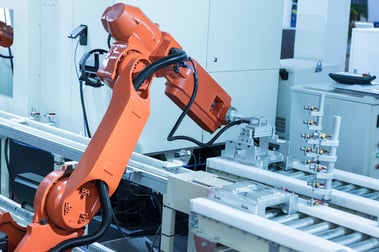The robots of the future will benefit from technology advances such as increased human-robot interaction, increased mobility, and multi-robot coordination.
The robots of the future will exceed the capabilities of today’s robots. They will be able to automating tasks that were previously impossible. Many of these robots of tomorrow–the ones that will transform the way we work, the way we travel, the way we purchase items and more–are under development today.
The limits of robot technology are being expanded in robotics labs and new forms of automation are emerging.
Future industrial robots under development
- Human-robot interaction: Much of today’s robotics research has more to do with people than it does with robots. Human-robot interaction (HRI) is about understanding people’s facial expressions, body language, and behavior.
- Snake-like mobility: Mobile robots with a snake-like body are being developed for a number of uses. For search-and-rescue missions and medical procedures, these mobile robots travel where humans cannot to help save lives.
- Legged mobility: Robots with functional legs can travel places where wheeled robots can’t and offer a much more stable platform for applications such as package delivery. In fact, tomorrow’s self-driving delivery trucks may feature walking robots to deliver packages to your door.
- Multi-robot coordination: The proliferation of robots outside the factory will require advanced coordination beyond what today’s robots are capable of. For example, search and rescue unmanned aerial vehicles (UAVs) and unmanned ground vehicles (UGVs) could be working in unison to scan an area quicker and more thoroughly.
- Underwater robotics: Robots are becoming more commonly used underwater, typically for studying the health of the oceans. Some robots feature a suite of on-board sensors that collect data as the robot autonomously glides through the water.
 The types of robotic technology listed above are among the most advanced. Other technologies under development include self-driving vehicles, robotic intelligence, and machine learning (ML). Also, robotic integration services for validation and testing have evolved as robotic research pushes the technology forward.
The types of robotic technology listed above are among the most advanced. Other technologies under development include self-driving vehicles, robotic intelligence, and machine learning (ML). Also, robotic integration services for validation and testing have evolved as robotic research pushes the technology forward.
Big changes are occurring in the robotics industry. New technology developments once thought impossible forms are not far away from becoming a reality.
This article originally appeared on the Robotics Online Blog. Robotic Industries Association (RIA) is a part of the Association for Advancing Automation (A3), a CFE Media content partner. Edited by Chris Vavra, production editor, Control Engineering, CFE Media, cvavra@cfemedia.com.









